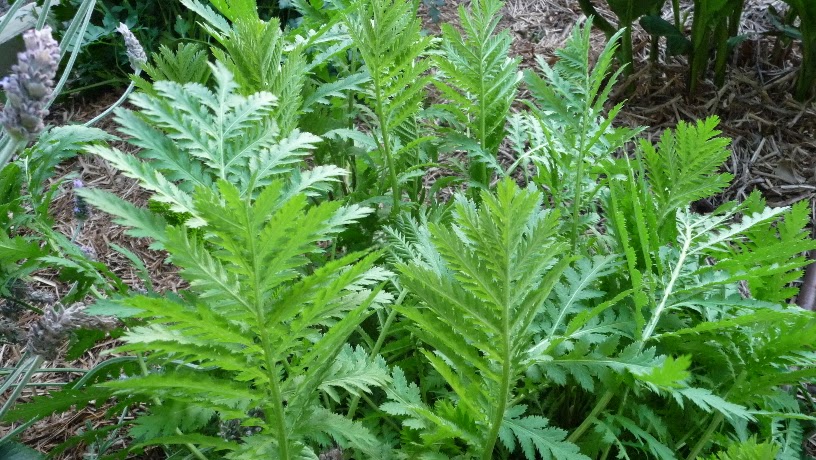Latest Update 2nd August 2016.
Tansy
- Tansy
propagates by rhizome and self seeds. Although only moderately invasive,
it needs to be kept under control especially by cutting the flowers
before they set their seeds.
- I grow Tansy under my peach and dwarf nectarine trees. Its a useful companion plant, and insect repellent.
- Because it grows so vigorously, I cut it regularly and use its chopped foliage in my Garden Ecobed worm farms as food.
- It is said to be high in potassium and can be used to good effect in the worm farm or compost heap.
- Tansy's foliage contains toxins and should be handled with care. Its no surprise that it doesn't seem to have many pests or diseases in my garden.
Details.
- Family: Asteraceae.
- Garden bed type: Drip line irrigated organic bed.
- Recommended soil pH: 4.8 - 7.5.
- Minimum Sun per Day: 3 hours.
- Plant Spacings (centres): 600mm.
- Good Companions: Grape, Cabbage, Blackberry, Peach, Raspberry, Lavender.
- Climate: Warm Temperate.
- Geographic Hemisphere: Southern.
Growing Conditions.
- Tansy needs full sun.
- It prefers sandy or loamy, well drained soil and is drought tolerant.
- However, mine grow happily in heavy clay which has been enriched with plenty of compost over many seasons.
- They are
light feeders and don't need much fertiliser. A top dressing of home made
compost in winter is beneficial and spraying with aerated compost tea every month will maintain good plant health.
- You do not need to mulch.
Soil Preparation.
- In
Spring, clear a space for the Tansy by removing old mulch, dead leaves
and unwanted organic material. Choose a place where it has not been
grown for several years.
- Apply a 60mm thick top dressing of home made compost and cover with a 50mm layer of straw mulch.
Growing Instructions.
- Tansy is a perennial plant grown from seed or from runners.
- Sow seeds in August on the surface of an organic seed growing mix in a mini pot, and lightly cover with the mix finely sieved.
- Soak
the mini pot for an hour in a tray containing 10mm of water (preferably
rainwater). The water will wick up into the soil without flooding it.
- Sink the mini pot up to its rim in a propagator's wicking media. This will
keep the soil moist until the seedlings are ready to
transplant. Protect the seedlings against frost.
- After
4 weeks transplant the seeds individually into organic potting mix in jiffy (peat) pots and returned to the propagator.
- After
a
further 4 weeks, clear small spaces in the much so these jiffy pots and their seedlings can be planted in the soil. Return the mulch to cover the soil once the seedlings are established.
- Planting Tansy from runners is easy. Just cut off a runner close to the parent plant in September. Move the mulch in the prepared bed to one side, plant the runner and water in well. Return the mulch as soon as the Tansy is established.
- Apply a foliar spray of aerated compost tea every 4 weeks when the other herbs are
Harvesting and Storage.
- I
only harvest Tansy as fodder for my Ecobed worms or to be added to the compost heap. Even
though Tansy is toxic to animals, it doesn't bother the worms or
other soil life forms.
Organic Pest Control.
- Greenhouse whitefly.
- Aerated
compost tea improves the plants resistance to whitefly damage.
- Control any
infestations by spraying your crop thoroughly with organic horticultural oil (Eco-oil in Australia).
- Spray again in a few days
to ensure second generation whitefly do not survive.
- General.
- Repeated foliar sprays of aerated compost tea should deter most airborne pests and diseases.
- Proper soil
preparation and regular applications of home made compost should control soil borne pests.
|

No comments:
Post a Comment